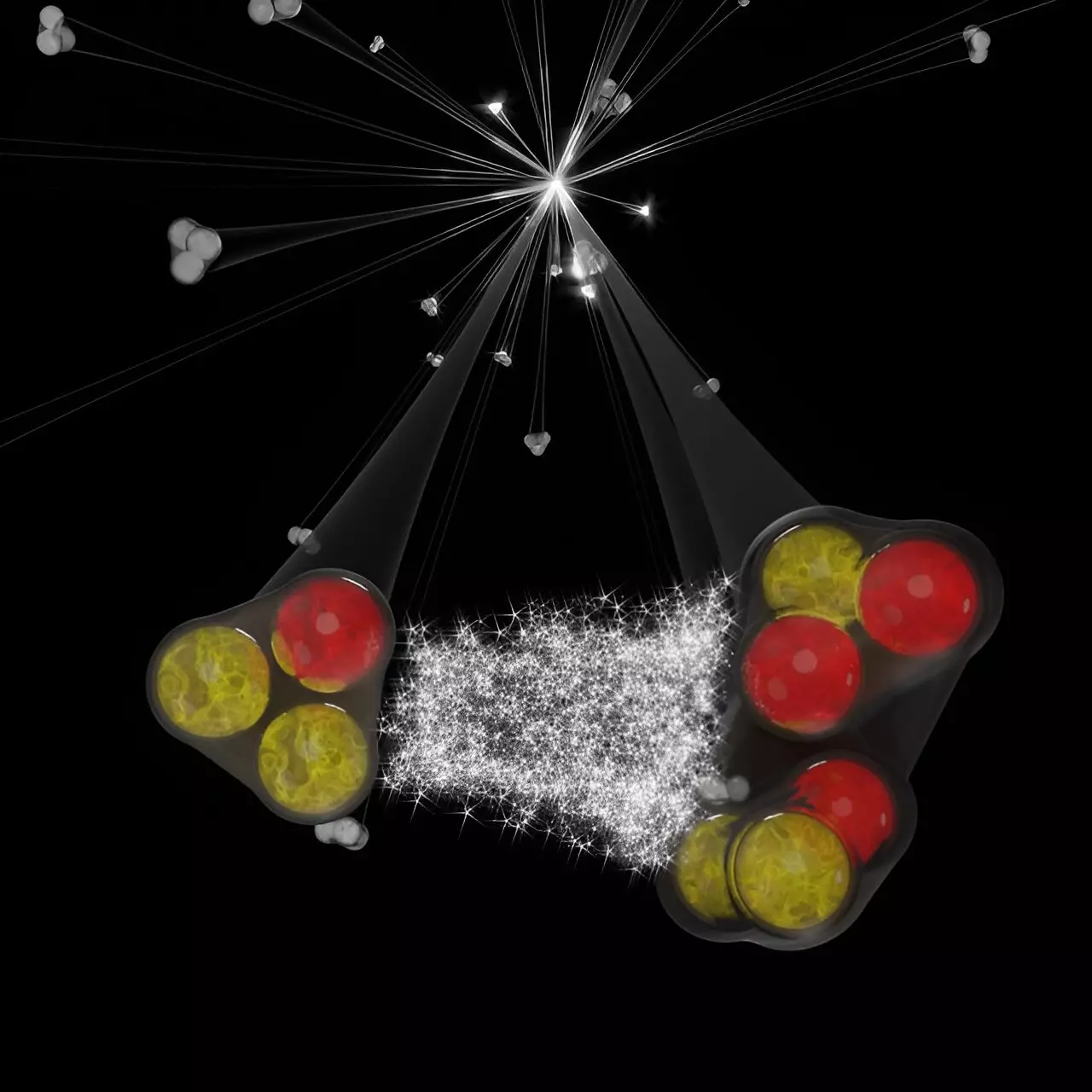Recent advancements in nuclear physics have led to significant breakthroughs in our understanding of three-body interactions, particularly through the research conducted by the ALICE collaboration, as published in Physical Review X. Their study focused on the correlations between kaon-deuteron and proton-deuteron systems, paving the way for detailed examinations of the forces at play within complex three-body nuclear arrangements. This exploration is critical, as the methodologies utilized in these studies might reveal intricate details about fundamental forces, extending our grasp of nuclear structure and the behavior of extreme states of matter like neutron stars.
Traditionally, fundamental forces are akin to interactions between pairs of entities. However, as one delves into more complicated systems, particularly those involving three or more particles, the simplicity of pairwise interactions dissipates. In nuclear physics, understanding the dynamics of three-hadron systems is vital for elucidating various phenomena, such as the structure of atomic nuclei, the characteristics of high-density nuclear substances, and the enigmas surrounding neutron star interiors. The study authored by the ALICE collaboration is a crucial step in this complex field, investigating whether neighboring particles in high-energy collisions influence one another prior to their dispersion in various directions.
High-energy proton-proton interactions at the LHC yield a plethora of particles emitted in close proximity, within a femtometer range (10^-15 m). The significance of this proximity becomes apparent when both the momentum and direction of the emitted particles align closely. These conditions warrant an examination of their mutual interactions, which can include quantum statistics and fundamental forces such as Coulomb or strong interactions. Hence, by observing the correlations between deuterons and other hadrons, such as protons or kaons, researchers can glean insights into three-body interactions that are otherwise challenging to analyze.
To evaluate interactions, the ALICE collaboration employed correlation functions to represent how the likelihood of detecting two particles with specific relative momenta deviates from a scenario where their momenta are entirely uncorrelated. When the value is unity, no correlation is observed; values exceeding one reflect attractive interactions, whereas those below indicate repulsion. Their findings revealed that the correlation functions for kaon-deuteron and proton-deuteron systems fell below unity when examining low relative transverse momenta, suggesting an overarching repulsive interaction characterizing these three-body dynamics.
Further analysis divulges that the separation distances between produced deuterons and protons or kaons hover around 2 femtometers. The correlation assessments for kaon-deuteron interactions were aptly described using a model that incorporates both the Coulomb and strong interactions prevalent between these particles. Conversely, the same model proved inadequate for proton-deuteron correlations, indicating a need for comprehensive three-body calculations that factor in the deuteron’s intricate structure. This necessity emphasizes the complexity inherent in these interactions and illustrates the model’s potential limitations for certain cases.
The successful melding of theoretical predictions with empirical observations underscores the sensitivity of the correlation functions used in this study to the nuanced short-range dynamics characteristic of three-nucleon systems. The method’s innovation holds promise for deepening the understanding of three-body interactions across various particle types. Future phases of the LHC, particularly Runs 3 and 4, are anticipated to apply a similar analytical framework to further investigate three-baryon systems, notably those involving strange and charm particles, which remain experimentally elusive.
Ultimately, the ALICE collaboration’s innovative research contributes greatly to the field of nuclear physics, shedding light on the complexities of three-body interactions and their implications for our understanding of atomic structure and astrophysical phenomena. The ongoing exploration of these dynamics promises to unveil new layers of knowledge that could significantly enhance our comprehension of the forces governing the universe at its most fundamental level. As the research progresses, the bridge between theoretical concepts and experimental observations becomes more robust, heralding a new chapter in high-energy nuclear physics.


Leave a Reply